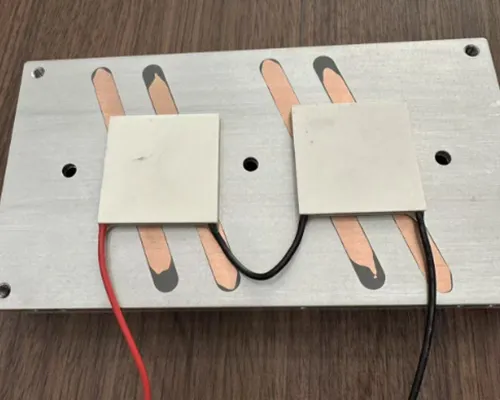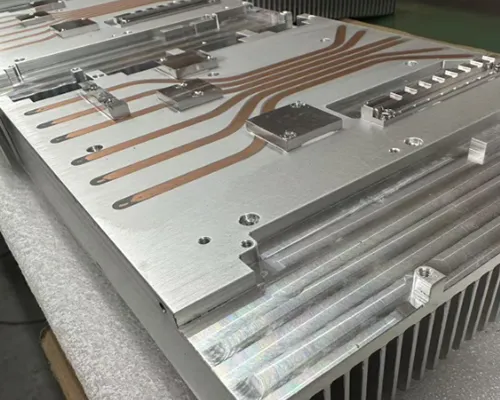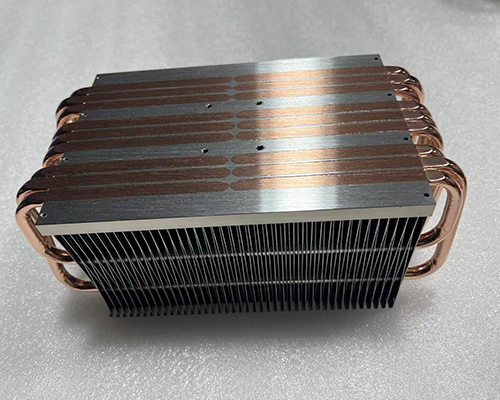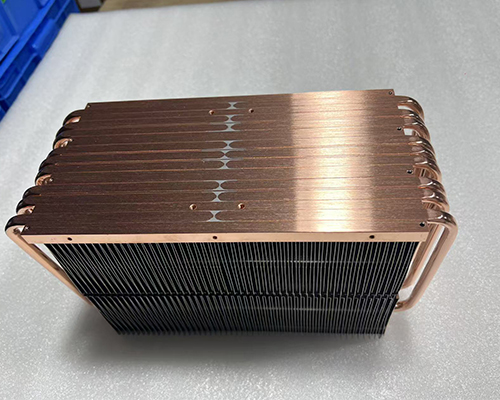Heat pipe heat sink
A heat pipe is a device that uses a phase change process to quickly transfer heat from one end to the other.
What is a heat pipe heat sink?
Heat pipe heat sink is an efficient heat dissipation device, usually composed of heat pipes and multi area heat dissipation fins. The heat pipes form a closed vacuum environment inside, filled with special working fluids such as pure water, methanol, etc. When one end of the heat pipe comes into contact with the heat source, the working liquid quickly absorbs heat and vaporizes, and the steam, driven by a small pressure difference, quickly flows towards the other end of the heat pipe - the condensing end. At the condensation end, steam releases heat and liquefies back into liquid. With the help of capillary action or gravity, the liquid flows back to the evaporation end, and this cycle repeats to achieve efficient heat transfer.

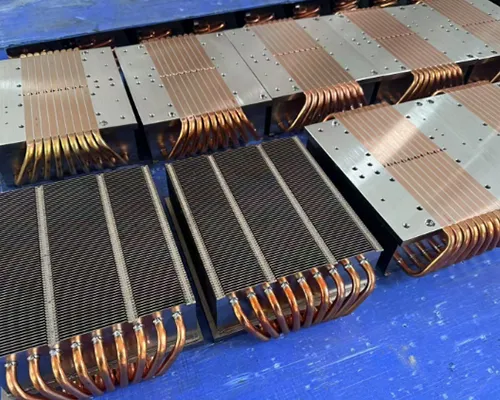
Why choose to design heat pipe heat sinks?
A heat pipe heat sink organically combines heat pipes with cooling fins, fans, and other components. The heat dissipation fins increase the heat dissipation area and accelerate the diffusion of heat to the surrounding air; The fan further enhances heat dissipation efficiency through forced convection. This combination enables the heat pipe heat sink to achieve much better heat dissipation performance than traditional radiators in a small volume and light weight. It is widely used in fields such as electronic devices, new energy vehicles, industrial automation equipment, etc. that require strict heat dissipation, especially for IGBT with high power density, temperature sensitive laser modules or pump sources, high-power LED integrated module light sources. The heat pipe heat sink solution is the first choice.
How to design a heat pipe heat sinks?
Application requirements
For engineers, it is necessary to design this heat pipe heat sink, whether the chip of the equipment has sufficient heat generation power, and whether there are limitations in the location of the heat source. By utilizing the transfer and conduction performance of the heat pipe, heat can be transferred to other areas. Factors such as whether a low temperature condition is required for working operation should be considered.
Choose the correct length and diameter of the heat pipe.
Select the appropriate size of heat pipe according to the heat dissipation requirements. The diameter, length, material, and internal capillary structure design of a heat pipe can all affect its heat transfer performance. Generally speaking, the larger the diameter and the shorter the length of the heat pipe, the stronger the heat transfer ability. Usually, the heat pipe with a controlled length of 180-250mm has the highest efficiency. If the structure needs to be bent, the minimum R angle for bending is 1.5 times the diameter.
For example, for an 8mm diameter heat pipe, the minimum R bending is 12. In terms of layout, the evaporation end of the heat pipe is tightly attached to the heat source to ensure rapid heat transfer; The condensing end is in full contact with the heat dissipation fins to achieve efficient diffusion of heat. For equipment with multiple heat sources, plan the direction of the heat pipe reasonably to evenly distribute the heat to the heat sink.

Provide customers with diversified and customized heat pipe designs
With our professional knowledge and innovative capabilities, we provide customers with diverse and customized heat pipe heat sinks. Our product range covers multiple fields, including consumer electronics, new energy, and telecommunications industries, meeting the needs of various application scenarios. We engage in in-depth communication to understand the unique needs of our customers, enabling us to customize various aspects from heat pipe structure, materials to complete heat dissipation solutions. By relying on advanced simulation technology and flexible manufacturing processes, we ensure that the design is scientifically reasonable and the quality is reliable, thereby helping our customers’ equipment operate efficiently and stably.


